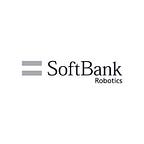Crafting a Data-Driven Return-to-Work Strategy
Data has never been more powerful — or more practical — as companies prepare for a safe return-to-work. Navigating the uncharted waters of a global pandemic, company leaders have had to make difficult decisions with the information available to them. Now, as case counts in the U.S. break records on an almost daily basis and promising vaccines meet critical milestones, the question of when and how to bring employees back to the office is top-of-mind for business leaders, and data is helping them prepare more effectively.
A Data-Drive Approach
Business leaders nationwide are keeping a close eye on the COVID-19 cases in their regions to measure their responses accordingly. At one point, declining cases in some areas looked promising, causing leaders to target year-end to implement return-to-work plans. But as fall approached, the situation took a turn for the worse, prompting many to abandon hope of bringing employees back to the workplace before 2021. But case counts aren’t the only sources of data that business leaders should consider when planning employees’ return to work. Read on to learn what critical metrics you should focus on during your rollout to measure the effectiveness of your return-to-work plan.
Key COVID-19 Metrics to Monitor
In addition to following your state and local guidance for occupancy limits and safety protocols, you also should keep a pulse on key COVID metrics as they evolve, including:
- Daily cases and hospitalizations
- 7-day rolling averages
- Effective reproduction value (Rt)
Most of us are already looking at daily cases and hospitalizations in their region; however, a 7-day rolling average provides a clearer picture of the direction these metrics are trending so you can plan ahead.
In addition, the effective reproduction rate or Rt value (reported by state) is a valuable leading indicator of how rapidly the virus is spreading in your area. A Rt value stands for the average number of people that a single infected person will transmit the virus to. For example, R1 means the average infected person is transmitting the virus to 1 other person.
Any value above R1 means that the virus will spread quickly in the community; meanwhile, a number below R1 indicates that the spread is slowing. An Rt value below 1 can be achieved by adhering to social distancing, mask wearing, and cleaning protocols — all of which help reduce the transmission of the disease from person to person.
Keeping a close eye on these real-time metrics helps leaders determine when it is appropriate to bring employees back to the workplace, how many people to allow in the office, and when to dial that number up or down based on local data. Additionally, being transparent with employees about how this data is driving decisions can help build trust throughout your organization — giving employees confidence that your return-to-work plans are grounded in science and data.
Cleaning Tech Rounds Out a Data-Driven Return-to-Work Plan
In addition to monitoring external data to guide your return-to-work strategy, you should also leverage internal data to implement and measure the effectiveness of your plan. For example, cleaning automation allows you to track how often and thoroughly office spaces are cleaned, ensuring that current cleaning standards are being met and keeping Rt values down.
For example, cleaning robots like Whiz, the autonomous vacuum sweeper from SoftBank Robotics, developed and distributed in partnership with Brain OS and ICE Robotics, can track the square footage vacuumed each day and keep a log of every time each space was vacuumed. Whiz provides analytics and actionable insights, helping to improve productivity, drive efficiency, and provide customers, guests, and employees a visible proof of cleanliness. This visibility boosts confidence in the health and safety of the workplace.
The data garnered from Whiz can help you track towards business goals, manage routes and location of your cleaning units, and gain actionable suggestions to get the most out of the technology.
Contact SoftBank Robotics to learn more about how automated cleaning tech can help your organization create a data-driven return-to-work strategy.
Written By: SoftBank Robotics Team
